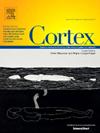Neural circuit mapping of waiting impulsivity and proactive inhibition with convergent evidence from fMRI and TMS
IF 3.2
2区 心理学
Q1 BEHAVIORAL SCIENCES
引用次数: 0
Abstract
Background and objectives
Waiting and stopping are essential and distinct elements of motor response inhibition. Waiting impulsivity has been traditionally studied in humans with choice serial reaction time tasks. Proactive stopping is one form of stopping relevant to waiting impulsivity and the neural substrates underlying their interaction are not well defined.
Methods
We conducted two separate, but hierarchical studies. In the first we used functional magnetic resonance imaging (fMRI), a choice reaction time task and a novel proactive stopping task, in N = 41 healthy volunteers to map the overlapping neural circuit involved in waiting impulsivity and proactive stopping. In the second study, we aimed to provide mechanistic and causal evidence that disruption of this circuit with continuous theta burst stimulation (cTBS; an inhibitory repetitive transcranial magnetic stimulation protocol) affected waiting impulsivity. We recruited N = 51 healthy, right-handed volunteers in a single-blind, randomized, between-subjects design who were randomly allocated to stimulation (N = 26) and sham (N = 25) groups and subsequently performed a choice reaction time task.
Results
In the first study, we showed; 1. a shared neural network comprising the pre- supplementary motor area and bilateral anterior insula underlying both waiting impulsivity and proactive stopping, and 2. activity in dorsomedial prefrontal cortex and left inferior frontal gyrus negatively correlated with waiting impulsivity in trials with additional target onset delay. In the second study, we demonstrated that inactivation of the left inferior frontal gyrus using cTBS significantly increased waiting impulsivity in a choice reaction time task.
Conclusions
Our findings highlight the relevance of task design in assessing motor response inhibition and the role of the left inferior frontal gyrus integrity and related neural circuitry in waiting impulsivity and proactive stopping. We also leverage the use of convergent evidence from multi-modal investigation tools in addressing the causal neural areas underlying distinct forms of impulsivity.
求助全文
约1分钟内获得全文
求助全文
来源期刊

Cortex
医学-行为科学
CiteScore
7.00
自引率
5.60%
发文量
250
审稿时长
74 days
期刊介绍:
CORTEX is an international journal devoted to the study of cognition and of the relationship between the nervous system and mental processes, particularly as these are reflected in the behaviour of patients with acquired brain lesions, normal volunteers, children with typical and atypical development, and in the activation of brain regions and systems as recorded by functional neuroimaging techniques. It was founded in 1964 by Ennio De Renzi.
 求助内容:
求助内容: 应助结果提醒方式:
应助结果提醒方式:


